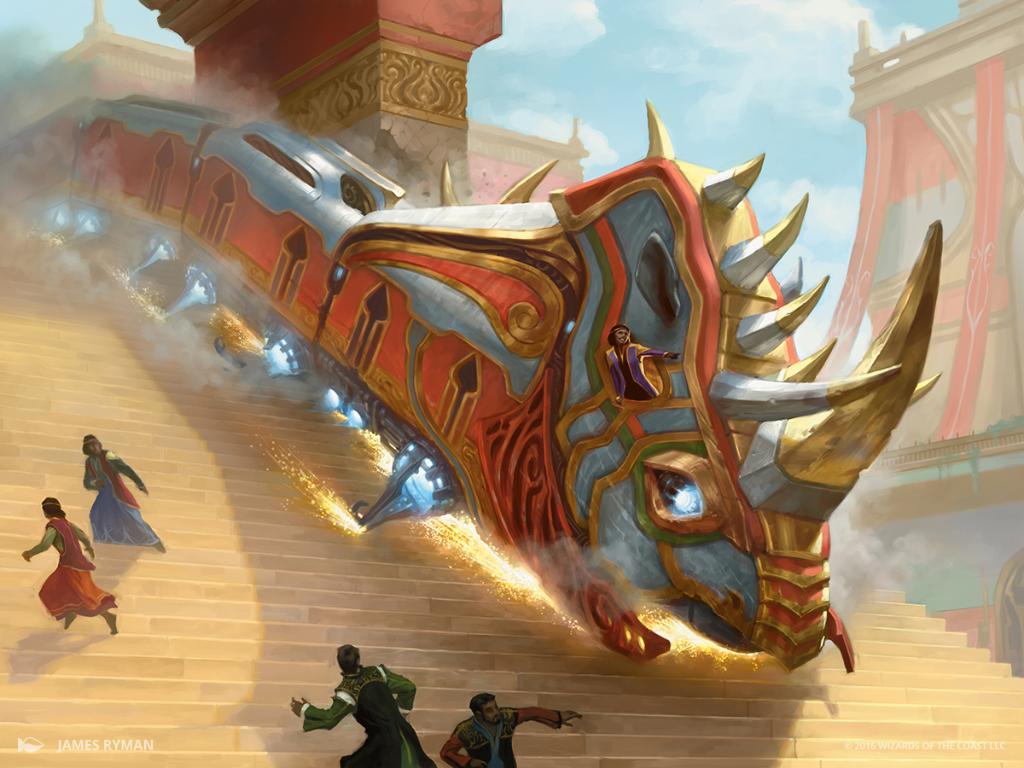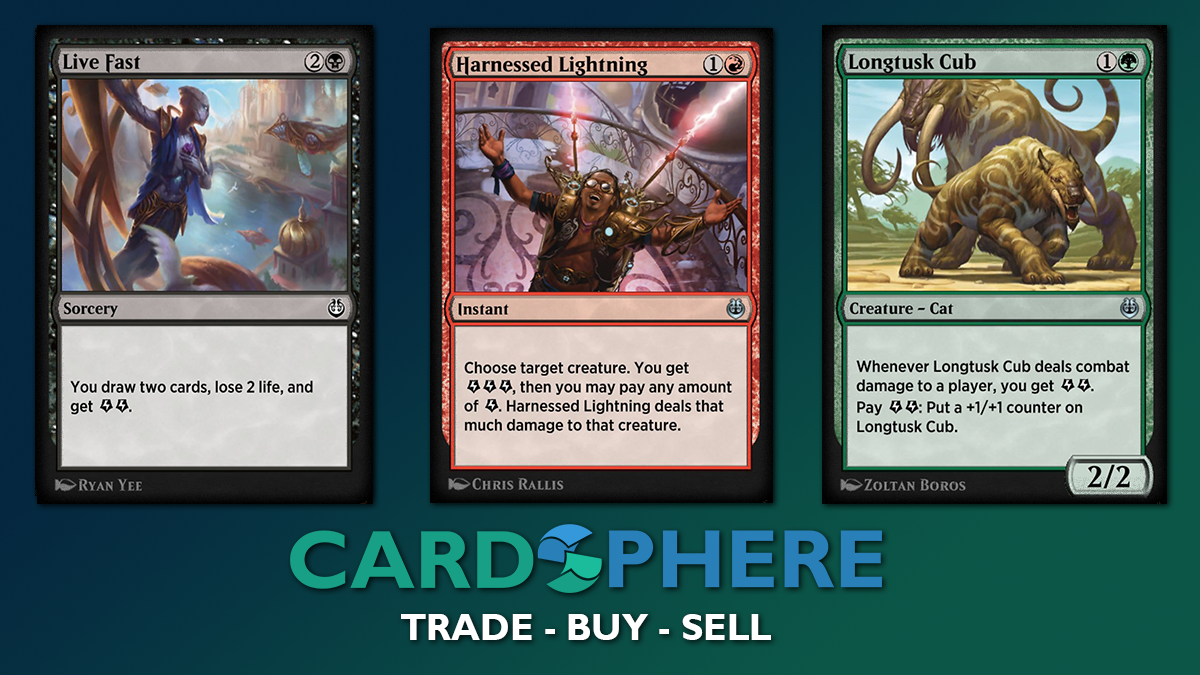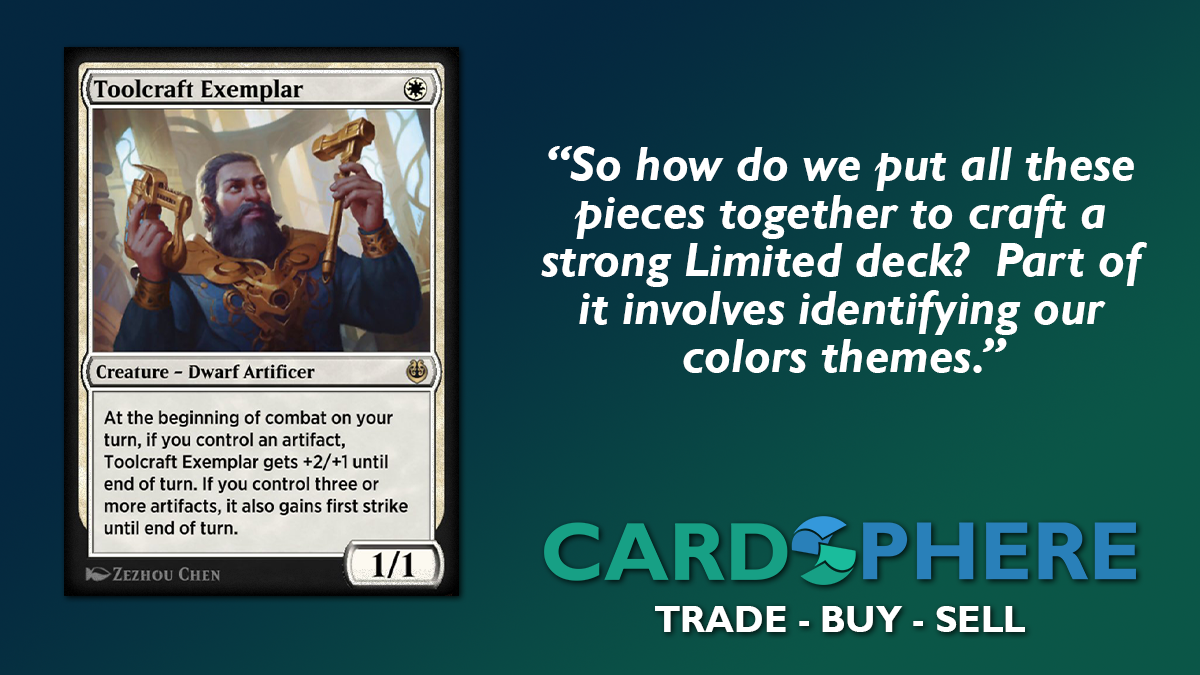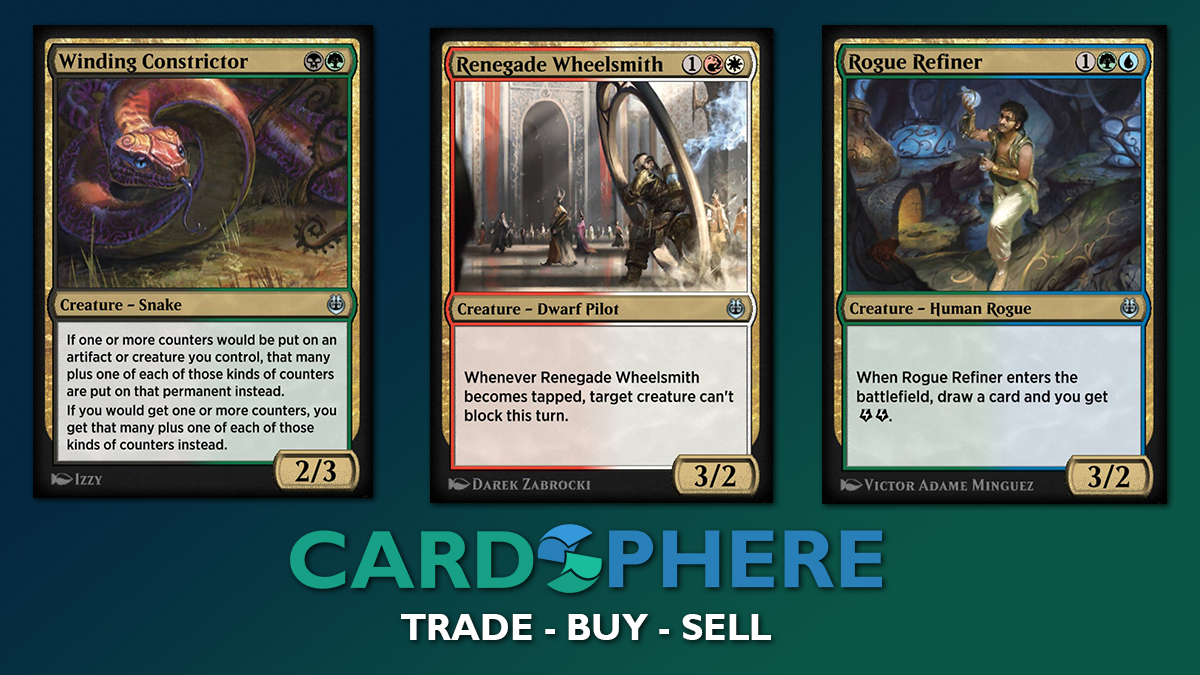Kicking it with Kaladesh Remastered

Hot off the heels of the successful Amonkhet Remastered set, Wizards has fast tracked the release of Kaladesh on MTG Arena. Once again they are making a mash up of the two sets of the block, giving Kaladesh and Aether Revolt one large release with (most) of the printed cards. Today we will take a look at some of the popular draft strategies and mechanics previously used, as well as checking in on which cards were removed that might be a high impact to draft strategies.
Cruising for a Bruising
Kaladesh introduced vehicles and they made quite an impact right out of the gate. In Standard Smuggler’s Copter saw play in 50% of the top 8 decks at Pro Tour Kaladesh, and was subsequently banned a few months later. The common and uncommon vehicles were no slouches either, and compared to what we saw in more recent sets like Ixalan and War of the Spark these cards should always be on your radar in Kaladesh Remastered draft.
WOTC appears to have learned a lesson or two though, as a key offender Renegade Freighter was not included in the set. We also saw some other common vehicles like Aradara Express being cut, which means you will be looking to the uncommon slot more frequently for these cards. This may be for the best, as vehicles can be difficult to interact with at times and most of the Kaladesh ones offered very generous stats and low crew costs.

Vehicles also lend themselves to the aggressive nature of the Kaladesh format. While there is a subset of blue cards that have more defensive stats, a majority of the set pushes aggressive themes. Similar to what we saw with Amonkhet Remastered with exert creatures, many of the better Kaladesh creatures promote attacking. Uncommon bomb Untethered Express combines a cheap crew cost with a creature that grows every attack. The cycle of thriving and aether creatures all allow you to invest energy when creatures attack. Many of the pilot creatures also come with aggressively costed stats, along with giving bonuses when crewing vehicles which all create for favorable attacking strategies.
Bringing the Energy
Energy is another brand new mechanic introduced with Kaladesh that is key to the limited format. It creates an entirely new resource, and planning how your deck will create and use energy is an important part of understanding your Kaladesh Limited. Certain cards are mainly used as energy resources, like Aether Meltdown, Live Fast or Empyreal Voyager. Others provide energy sinks, like Thriving Rhino.
Some energy cards will offer perfectly fine value on their own but also allow you to sink extra energy into them to create much stronger effects. Harnessed Lightning and and Die Young are reasonable removal spells on their own, but having access to an extra two or three energy can be the difference between being able to kill a mana dork or an opponent's bomb rare creature. Not every deck will focus as heavily on energy but it’s important to recognize the resource exists and understand how you will use it. The existence of energy also replaces many cards that would traditionally have mana activated effects. This means that you won’t often have mana sinks on your creatures in the late game, and adds to the aggressive nature of the format. You can sometimes get away with just running 16 lands because of these missing mana sinks, since Kaladesh Remastered does not offer cycling or a similar mechanic to get rid of excess lands.

Improvise and Revolt
The last two new card abilities are a bit less impactful, but being aware of their use is still important. Improvise is a modal mechanic that allows you to either add +1/+1 counters to a creature or create 1/1 servo tokens when you cast the creature. It can enable some go wide strategies, and also can spread your power on the board to create more effective vehicle crew options. If you don’t need the extra bodies, it can give you a larger threat to push through potential board stalls.
The final new keyword is called Revolt, which provides a bonus if you had a permanent leave the battlefield before casting it. While it’s important to know your own revolt triggers it is often just as or more important to understand what an opponent might gain from a Revolt trigger. When your opponent swings with a 2/2 into your 4/4, it may be because they just need a creature to die so they can trigger Revolt on Fatal Push and finish off your four mana creature. While you may not always be able to play around these kind of combat scenarios, if you are in a position where you can lock the win with the return attack you may be better off letting the two damage through.
Deckcrafting Exemplar

So how do we put all these pieces together to craft a strong Limited deck? Part of it involves identifying our colors themes. R/W and R/B are both aggressive color combinations that will focus on strong vehicles synergies and removal along with low CMC creatures that have high power. U/G and R/G both focus more on energy synergies to either create aggressive combat scenarios or control the board. Bombs like Confiscation Coup can go a long ways towards giving your energy the best value possible. G/B looks to utilize +1/+1 counters through fabricate or energy growth, and has some of the stronger signpost uncommons with Winding Constrictor and Armorcraft Judge. G/W also takes advantage of counters, but tends toward more of a go wide strategy that we see in a lot of limited environments. Fabricate adds a lot of extra bodies to the board, turning Inspired Charge into a lethal attack. Many of whites rares also support go wide by pumping all your servos or creatures. B/W has a minor graveyard theme, and tries to build off of triggering Revolt and then returning those cards from your graveyard to hand. U/R plays a lot of energy related cards, but is one of the slower red archetypes focusing more on board control and fliers to win the game. W/U usually leans towards the standard flying archetype, with the signpost uncommons focusing on card draw and life gain. Because a lot of blues cards are more defensive in the set, it usually isn’t as fast as you might see in some other formats.

Because Kaladesh is an artifact set, you're often able to hold off on committing to a specific color early and see what is available on your table. Many of the uncommon and rare vehicles are playable in any deck, and taking them early can give you a chance to see what color cards appear to be open on the table. Keep in mind that your tablemates may be doing the same thing, so if you go for that first pick Untethered Express and pass a Ridgescale Tusker, you may not be seeing much green come back your way pack two.
Understanding your mana base is another important facet of Kaladesh limited, and one that can be very frustrating. The high inclusion of artifacts can be a blessing for filling out a deck, but it is also a format with not much in the way of color fixing outside of green. Because of this I rarely plan to play more than two colors, and try to make sure I don’t have too many cards with two or three of the same color pip. Land flood is common. Kaladesh limited decks rarely want to see more than five or six lands due to the lack of mana sinks. Cards like Attune with Aether can help thin lands to some extent, but I also often consider running only sixteen lands if my curve supports it.
Once it's all put together we have to deploy our strategy in game. Most games will lean towards attacking, but knowing when to trade vs saving a creature is very important. Maybe I need to keep back my Veteran Motorist to crew an Irontread Crusher. If I have a heavily energy focused deck with few sinks, I might not want to chump with a Whirler Virtuoso knowing that I may soon have energy to pump into it. There aren't quite as many instants in the set, but many of them have a low mana cost so understanding each colors combat tricks will also go a long way to creating a successful draft. It’s also important to remember that you can sometimes strand an opponents vehicles by using removal on the crew creatures instead of the vehicle itself. This isn’t always the best route to go, but if you are in a battle of attrition and both players are in topdeck mode you can sometimes get a two for one effect out of it.
I hope you are as excited as I am to see the Kaladesh limited environment returning online. Thank you for joining me on this review and if you have any questions/thoughts about the set please feel free to reach out on Reddit or Discord as I love to hear from readers.
